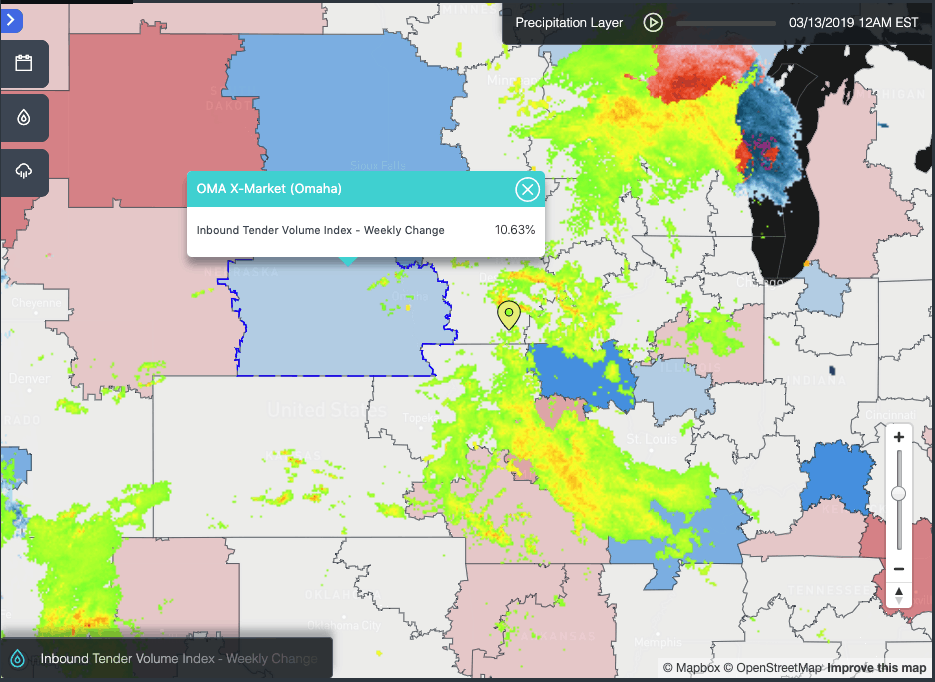Severe flooding hits home and causes two deaths in the region, but freight impact limited to major bulk commodities.
Nearly 300 miles of the Missouri River remain closed to barge traffic due to high water and swift currents after massive floods hit the Midwest. While local communities are feeling the flood’s negative impacts, the Missouri’s declining role in river transportation means that there will be very little impact on nationwide bulk transport markets.
The U.S. Coast Guard (USCG) closed a section of the Missouri River extending roughly from Omaha, Nebraska south to Kansas City, Missouri. That section remains closed as of Monday, March 18 as melting snow from the major blizzard that hit the Great Plains states last week floods the longest navigable river in the U.S.
The USCG originally closed a 100-mile stretch of the Missouri in the blizzard’s immediate wake on Friday, March 15. But with water levels and currents still rising, the closure was extended to 265 miles. A USCG spokesperson was unable to provide any immediate count of barge queues or vessel delays occurring on either side of the closed section.
The U.S. Geological Survey shows the height of the Missouri River at Omaha went from 15 above observation stations to nearly 35 feet currently. Discharge data show the Missouri at the same location going from just around 30,000 cubic-feet per second to as much as 187,000 cubic-feet per second.
The flooding of the Missouri has severely affected rail operations for the two main western railways, BNSF and Union Pacific, in Nebraska and Iowa.
A Cargill-owned grain elevator in Council Bluffs, Iowa, which can handle three barges, is closed due to the flooding. A Warren Performance Products-owned lubricants and plastics manufacturing facility in Council Bluffs is also served by barges on the Missouri River. A Warren representative was unavailable to comment on the plant’s status.
Outside the regional impact, one transport industry expert who spoke on background said the impacts further downstream will be mixed.
With most of the nation’s grain barge traffic moving on the Mississippi River, the Missouri River plays a very small role in agriculture markets. It’s mainly used for shipping bulk commodities such as wood products, pulp, sand, gravel and metals. But barge shipments of crude materials has largely been flat since 2015 at just over four million short tons per year, according to the U.S. Army Corps of Engineers. The amount coming down river from the Midwest has fallen from four million short tons in 2008 to 2.4 million short tons in 2017. Upriver volumes, though, show small growth, reaching 1.83 million short tons from 1.49 million short tons over the same time.
With barge and rail traffic largely shut out, the region is capacity-constrained regarding transportation. SONAR data indicate that the Inbound Tender Volume Index for Omaha (SONAR: ITVI.OMA), which shows the percentage change for inbound load volumes, jumped 10.6 percent from last week due to other transportation networks being hit by the flooding.













One Comment
Comments are closed.